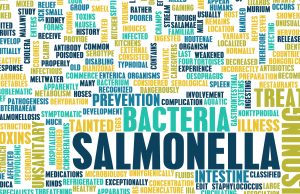
Not something to be taken lightly, food poisoning is especially serious and potentially life-threatening for older adults, as well as people with weaker immune systems. If you have a chronic illness, too, you should be careful.
Risks more serious than you may realize
According to the Centers for Disease Control and Prevention (CDC), foodborne illness, what’s commonly referred to as food poisoning, is one of the most common yet preventable health problems. Every year, about one in six Americans – or 48 million people – gets a food-borne disease. Roughly 128,000 people are hospitalized and 3,000 die because of them.
Generally speaking, you may have food poisoning if you have diarrhea for more than three days along with a high fever (a temperature over 101.5 degrees Fahrenheit), blood inside your stools; prolonged periods of vomiting; signs of dehydration, including a decrease in urination, along with a dry mouth and throat; and dizzy spells whenever you stand up. Symptoms of food poisoning can even be as life-threatening as organ failure.
RELATED READING: Alert: 12 contaminated foods you need to know about
Know how to protect yourself
There are steps that you can take right now in order to protect yourself, your family and your friends from food poisoning at home. The CDC and the Mayo Clinic offer the following helpful tips that I wholeheartedly endorse:
1. First of all, remember to wash your hands, food surfaces and utensils frequently. Before and after you handle food, try to wash your hands thoroughly with warm, soapy water. And use hot, soapy water whenever you wash your utensils, cutting boards and other surfaces.
2. Whenever you shop for food, or even prepare or store it, keep raw meat, poultry, fish and shellfish completely separate from those ready-to-eat foods. This prevents cross-contamination.
3. Cook foods until they reach a safe temperature in order to kill harmful organisms. The best way to determine this is by using a food thermometer. Keep in mind that ground beef should be cooked to 160 degrees Fahrenheit, while steaks and roasts should be cooked to at least 145 degrees Fahrenheit. Pork, too, needs to be cooked to at least 160 degrees Fahrenheit, but chicken and turkey need to be cooked to 165 degrees Fahrenheit. Meanwhile, fish is cooked at 145 degrees Fahrenheit.
RELATED READING: 4 foods to never buy at an American grocery store
4. Perishable foods should be refrigerated or frozen within two hours of purchase or preparation.
5. Defrost food as safely as possible. That means avoid thawing foods at room temperature. Instead, defrost items in the refrigerator or microwave by using the “defrost” or “50-percent-power” setting. Also try running cold water over your food.
6. Finally, whenever you’re unsure whether a food has been prepared, served or stored safely, just throw it out. Don’t taste it. That’s because food left at room temperature for too long may contain bacteria or toxins – those that can’t be destroyed simply by cooking.
Remember, every single person is at risk for food poisoning. So reduce your risk this summer by eating more safely and hygienically. Extra care and caution is your best defense.